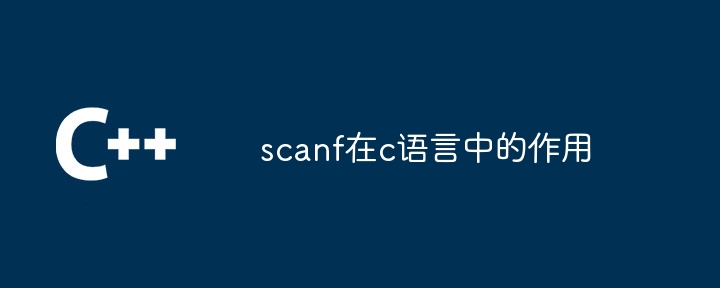
In C language, the scanf function is used to read data from standard input and store it in a specified variable. Usage steps: 1. Declare the variables to be read; 2. Call the scanf function and specify the format and variables to be read.

The role of scanf function in C language
In C language, scanf function is used to read from standard input Reads data and stores it in the specified variable. Its prototype is as follows:
<code class="c">int scanf(const char *format, ...);</code>
where:
format is a string specifying the format of the input data. ... is a variable parameter list used to specify the variables to be read. Usage
To use the scanf function, you need to follow the following steps:
Format specifiers
The following format specifiers are used in the format string to specify the type of data to be read:
| Format specifier | Data type |
|---|---|
| Integer | |
| Floating point number | |
| Character | |
| String |
Example
Here is an example of reading two integers and one character:<code class="c">int a, b;
char c;
scanf("%d %d %c", &a, &b, &c);</code> specifies that the first parameter a is an integer.
Specifies that the second parameter b is an integer.
Specifies the third parameter c is a character.
a, b, and c .
The above is the detailed content of The role of scanf in c language. For more information, please follow other related articles on the PHP Chinese website!




